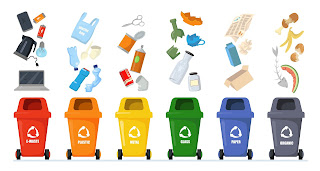Unlocking the Power of the Circular Economy: A Sustainable Future Starts Here
In today’s rapidly evolving world, environmental challenges are pushing governments, businesses, and individuals to rethink traditional ways of consuming and producing. Enter the circular economy—a transformative approach designed to reduce waste, conserve resources, and promote long-term sustainability. Unlike the linear "take-make-dispose" model, the circular economy keeps products and materials in use for as long as possible, extracting maximum value before safely and responsibly regenerating them.
In this blog, we’ll explore what the circular economy is, how it works, its key principles, and why it’s critical for building a sustainable future.
What Is the Circular Economy?
The circular economy is an economic model that emphasizes resource efficiency by designing out waste and pollution, keeping materials in use, and regenerating natural systems. It challenges the outdated linear model of consumption by promoting reuse, repair, remanufacture, and recycling.
At its core, the circular economy mimics nature—where everything has a purpose and nothing goes to waste.
Key Principles of the Circular Economy
-
Design Out Waste and Pollution
-
Products are designed with longevity, reuse, and recyclability in mind, minimizing the use of non-renewable resources.
-
-
Keep Products and Materials in Use
-
Encourages business models such as product-as-a-service, leasing, and second-hand markets to extend product lifecycles.
-
-
Regenerate Natural Systems
-
Focuses on restoring ecosystems by returning valuable nutrients to the soil and encouraging renewable energy usage.
-
Benefits of the Circular Economy
Reduces Waste and Pollution
By keeping resources in use and designing waste out of the system, the circular economy reduces environmental harm significantly.
Creates Economic Opportunities
New business models based on reuse, remanufacturing, and sharing can lead to job creation and innovation.
Preserves Natural Resources
With finite raw materials on the planet, a circular model ensures better stewardship and conservation.
Promotes Sustainable Consumption
Encouraging consumers to think beyond disposal fosters a culture of sustainability and conscious living.
Circular Economy in Action: Real-World Examples
-
IKEA is moving toward a circular model by offering furniture take-back services and designing modular, repairable furniture.
-
Patagonia promotes reuse and repair of clothing through its Worn Wear program, reducing textile waste.
-
Philips offers lighting as a service, taking responsibility for the maintenance and end-of-life recovery of lighting systems.
These examples demonstrate how companies are integrating circular economy principles into their operations to reduce impact and drive innovation.
How Individuals Can Support the Circular Economy
-
Buy Less, Choose Wisely: Opt for durable, repairable, and sustainable products.
-
Recycle and Reuse: Properly sort waste and find creative ways to reuse items.
-
Support Circular Brands: Choose companies that prioritize sustainable design and closed-loop practices.
-
Share and Swap: Participate in community-sharing platforms, clothing swaps, or tool libraries.
Conclusion
The circular economy is more than just a buzzword—it’s a necessary shift in how we design, produce, and consume. By embracing circular principles, we can reduce our environmental impact, create resilient economies, and preserve the planet for future generations. Whether you’re a business leader, policy maker, or everyday consumer, your choices matter.



Comments
Post a Comment